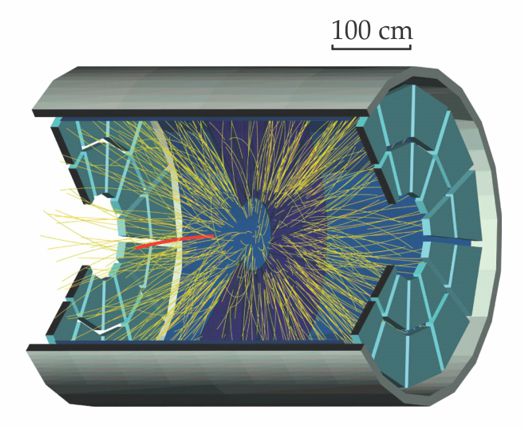Observing antimatter helium-4
DOI: 10.1063/PT.3.1156
Observing antimatter helium-4. When relativistic heavy nuclei collide, they fleetingly interact to produce hot, dense matter—often interpreted as the quark–gluon plasma—containing roughly equal numbers of quarks and antiquarks. As the matter cools, it changes phase to a hadronic gas that includes nucleons and their antiparticles. And those antinucleons, when close enough in position and momentum, can form a stable bound state. The STAR collaboration, a team of hundreds of scientists from 54 institutions worldwide, has now found evidence for antihelium-4 in the debris created in high-energy collisions at Brookhaven National Laboratory’s Relativistic Heavy Ion Collider. Consisting of two antiprotons and two antineutrons, 4He― is the heaviest antinucleus yet detected. The experiment’s central detector, situated in a solenoidal magnetic field, is used to image the ionization trail left by charged particles and antiparticles as they traverse a gas-filled chamber. From measurements of the energy loss and the time of flight for the antiparticles to reach a secondary detector composed of 23 000 sensors, the collaboration unambiguously identified 18 4He― nuclei in a sample of 1012 tracks from a billion gold-on-gold collisions; the figure shows the tracks, including one (red) from a 4He― nucleus, for a typical event. The yield is consistent with expectations from thermodynamic and nucleosynthesis models and provides a benchmark for any future observations of 4He― , or even heavier antimatter nuclei, from cosmic radiation. (


